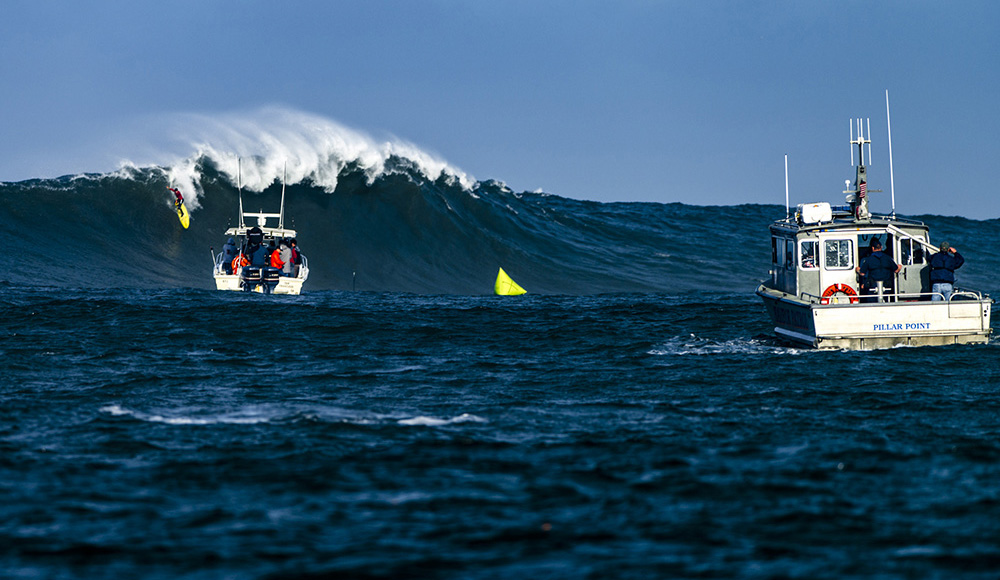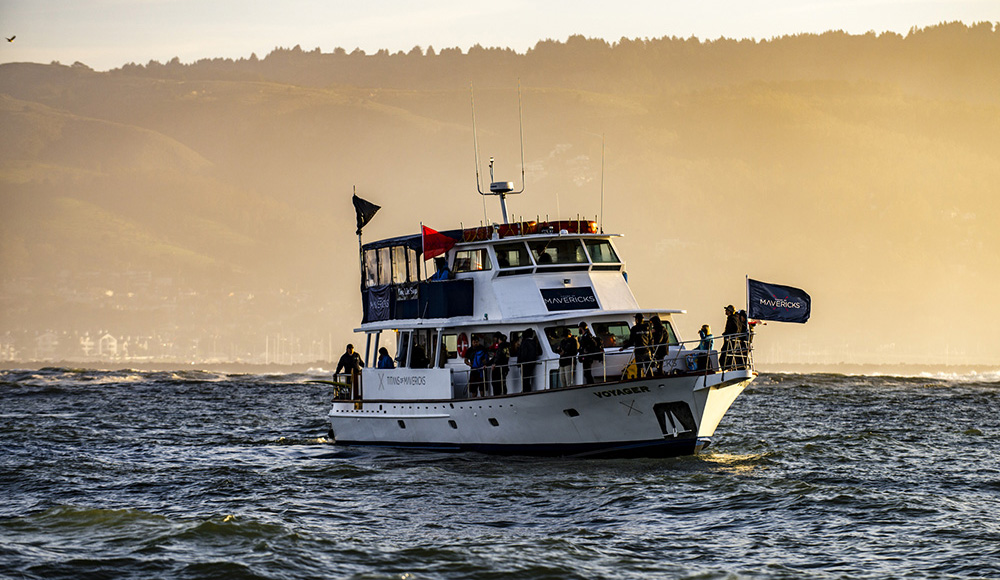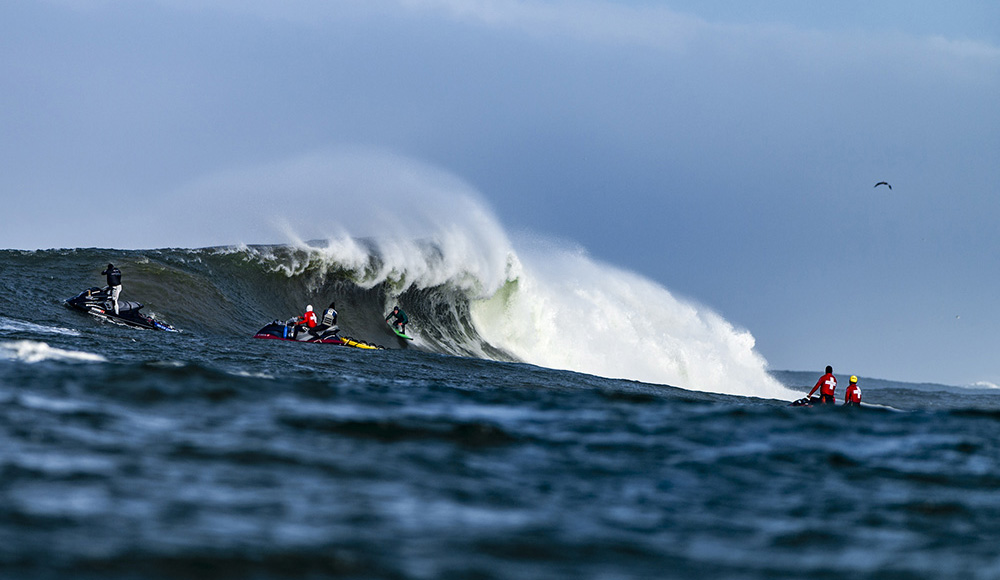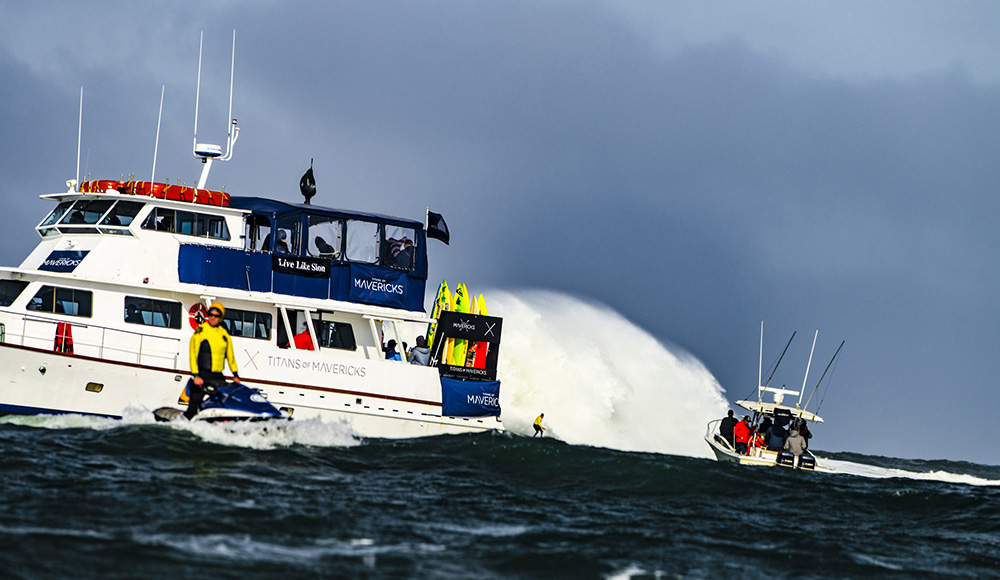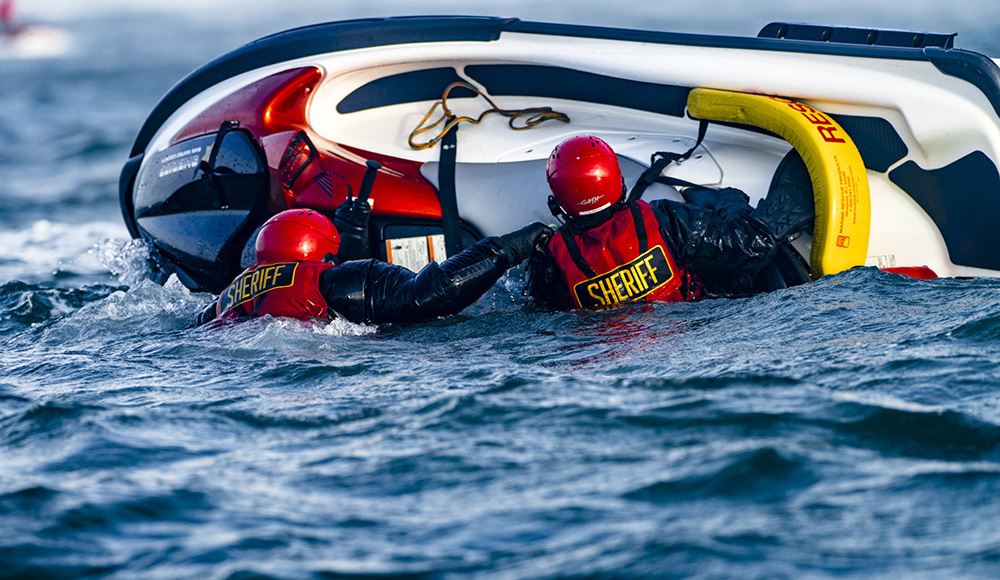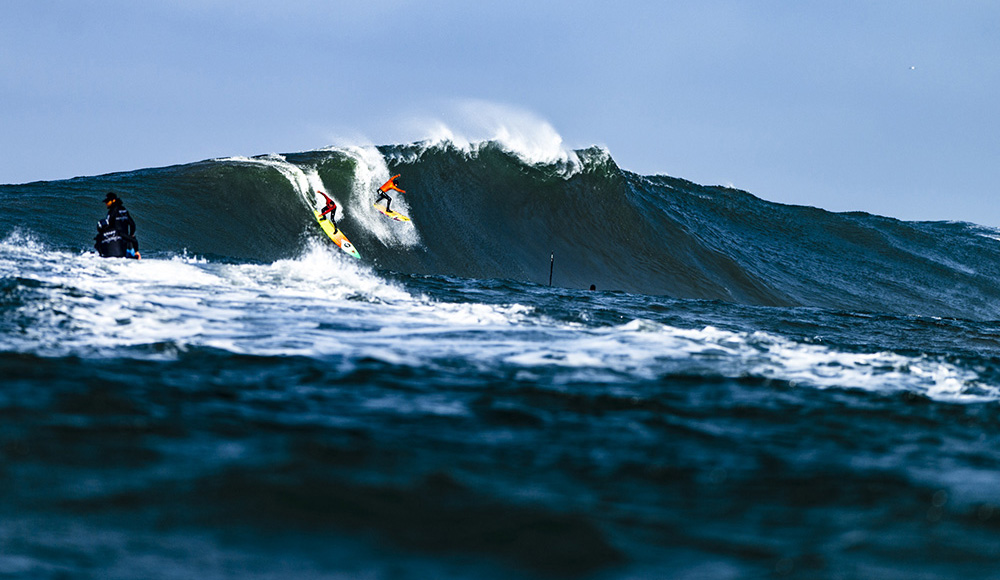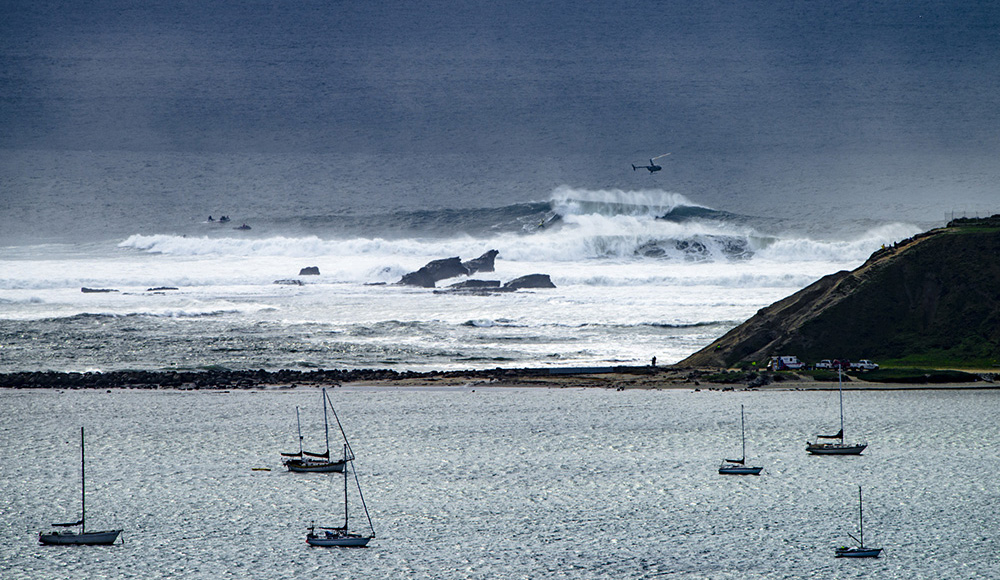For those who watched the Titans of Maverick’s webcast this year, the coverage was phenomenal: cliff top angles, multiple water angles, helicopter angles. The contest went off as a huge success in more ways than one. Yet if you were there to watch the event in person, or cover it, you might not have seen much.
There’s been a growing trend in the world of high-profile surf contests, where event holders are looking to limit access and coverage. The WSL tried it around this time last year at Snapper by posting signs (on a public beach no less) stating no one could take or distribute photos of the event unless credentialed, and making credentialed photographers sign away their rights to their own images, even if on assignments for established editorial outlets. Social media erupted, a case was filed in the Australian courts, and in short order the signs were thankfully taken down.
Now, contests at Maverick’s are a sensitive and volatile subject in the best of times. From who holds the permits, to who is invited, to the name, sponsors, the inclusion of women, you name it, it’s highly debated. Even former champion Grant “Twiggy” Baker is currently a persona non grata for what many believe was voicing strong opinions against the current establishment. (Disclaimer: I love Maverick’s and everything about it!)
That being said, one of the other ways you might consider the Titans of Maverick’s a success this year is in the privatization of a surf contest. In its current iteration, one cannot reasonably watch the contest from land, unless you’re willing to pay for VIP access (new this year), nor do you stand much of a chance watching it from the water either.
No longer surprising, the Titans of Maverick’s contest permit allowed (required?) the closure of and access to the headlands—as has unfortunately become routine. The cliffs are unstable, the top of the point is a military radar installation, and a rogue wave washed through the lagoon injuring spectators and and damaging the judge’s tower (at the time on top of the seawall) back in 2010. So while perhaps reasonable measures, they also preclude watching the contest live from the shore.
As a further form of control over the past couple contests, regardless of the name they’re held under, organizers have seen the implementation of a giant, counterclockwise rotation of spectator boats in the channel. Presumably for “safety,” the only injuries or accidents have happened on boats/to those regulating the rotation (Harbor Patrol, Sheriff’s Department, and Coast Guard). This year the only incident was a Sheriff’s Dept. jet ski turtling—minor for certain, but no other crafts had any issues.
While this rotation is perhaps good in theory (to instill some planned sense of order or fairness onto the parade of boats?), it fails miserably in practice. Despite years of boats lining the Maverick’s channel like at every other big wave spot in the world, the new expected rotation has yielded chaos on the water and many missed waves for spectators. Charter boats charge a premium, typically dividing the contest into two separate sessions out on the water, and have the briefest glimpses of the competition zone before being forced to take a 10-minute circular steam out to sea and back.
The special revision for this year’s contest was an extra-large buffer zone between the contest and pinwheel of boats, allowing for the various support boats. So many that at times even the press boat’s view was blocked, and so large that even from the channel you at best viewed the contest from a distance similar to standing on the (closed) cliffs. Add in the cresting of waves also blocking views, and you have as much luck seeing a wave ridden as hitting a bull’s-eye when throwing darts blindfolded. Of course that is if you’re lucky enough for your turn in the rotation to align with a set wave, let alone one being ridden. Factor in raising your camera to take photos or video, and the task become a near impossibility.
So basically 30 miles from one of the largest cities in our country, we have a surf event, which attracts attention the world over, yet you cannot under, reasonable circumstances see or document from land or water. Amazingly, the only option was to watch the webcast—as phenomenal as it was—or shell out hundreds of dollars as a VIP where you could enjoy your view either on the competitor’s boat or in the cliff-top tent. (Rumors always persist, and this year’s unconfirmed rumor is event organizers paid upwards of $300,000 for the rights to plop a few tents for judges, production staff, and paying VIPs on the military land atop the cliffs at Pillar Point).
By effectively eliminating any outside media coverage and access to view the event—which is off or our protected beaches and in the ocean, not a privately owned stadium or arena mind you—they have effectively privatized a surf contest. If that was their goal, then it was a resounding success. I love big wave surfing, and am excited to see the rise in commitment, skill, and coverage of events around the world, yet it would be a terrible shame if it is all done at a cost to those who can and would willingly witness in person.

